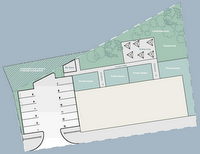Old and new in Glasgow





Nowhere are the changes in Glasgow more evident than in the state of its housing. Go along any street, road or drive in this huge city, and you will see recently rennovated housing.
Like many other towns and cities in Britain, Glasgow is undergoing something of a transformation; it is being refurbished, or ‘tarted up’ as we used to say.
Whole areas of the city, like Dennistoun, just off the city centre, are undergoing what architects might term, ‘urban renewal’, meaning that buildings are being cleaned of the industrial stains, leaving this marvelous ‘pink sandstone’ effect to what were probably blackened tenements.
The word ‘tenement’ means something like house divided into separate units of accommodation (flats), but also has the connotation of slum housing; you might have heard the word with other words, in phrases like ‘dingy tenements’ or ‘tenement slums’.
In reality, in Dennistoun at any rate, as well as across this large city, nothing could be further from the truth. Take the ‘drives’ that stand in rows behind the main street in Dennistoun, Duke Street. The street where we are staying is full of young people – professionals – and others – a hairdresser and her husband live next door to us, a university lecturer lives below, and so on.
The main street, Duke Street, a continuation of George Street, out of George Square in the centre, is visibly struggling to keep up. The street is lined with shops and public houses, a few of these being fairly respectable, others somewhat less so.
Likewise, some of the shops are fashionably smart; others have the shutters more or less permanently up and are closed, while others are a bit on the shabby side.
Waiting for a bus into the city, you sense this half and half existence; of a population living in the past, and one living in the here and now and looking forward to a prosperous future.
Inevitably, the splitting is along the lines of financial remuneration and occupational rewards, which probably translates into age; older people being paid less than neighbours still in their late twenties or early thirties.
You sense too that behaviour and habit are locked into this division; younger people either looking after their children, or going into the city centre pubs and wine bars in the evening, with older people \taking advantage of happy hour and staying until closing time.
The change from a manufacturing economy to a service economy is probably no better illustrated than in this aspect of city life. In the days when Glasgow and the Clyde was synonymous with heavy engineering and shipbuilding, the welders, riveters and loftsmen, the fitters, turners and borers would be heading for a ‘swally’ at the pub nearest to the gates of the shipyard or the machine shops.
Now things have changed; with very little heavy industry, an increase in lighter, office related businesses and services, the workforce are probably inclined to head for a gym, a swimming pool or home. No raging thirsts to be quenched here, no blackened faced workers wending their way home from the pub, just cars, buses, the odd bicycle, and people on foot.
Aspirations have changed, architecture has changed, and a city awakes, not to a factory hooter, or the siren in a shipyard, but to the dawn chorus again, quickly followed by the dull roar of Duke Street as its inhabitants converge on a city that is emerging into a different age.
Robert L. Fielding

0 Comments:
Post a Comment
Visit My Website<< Home